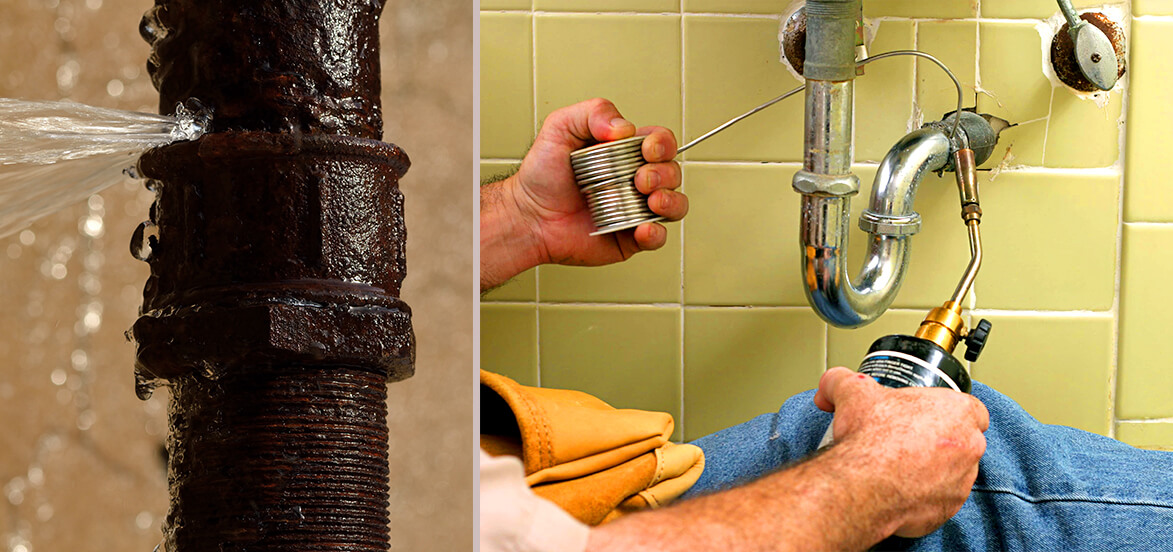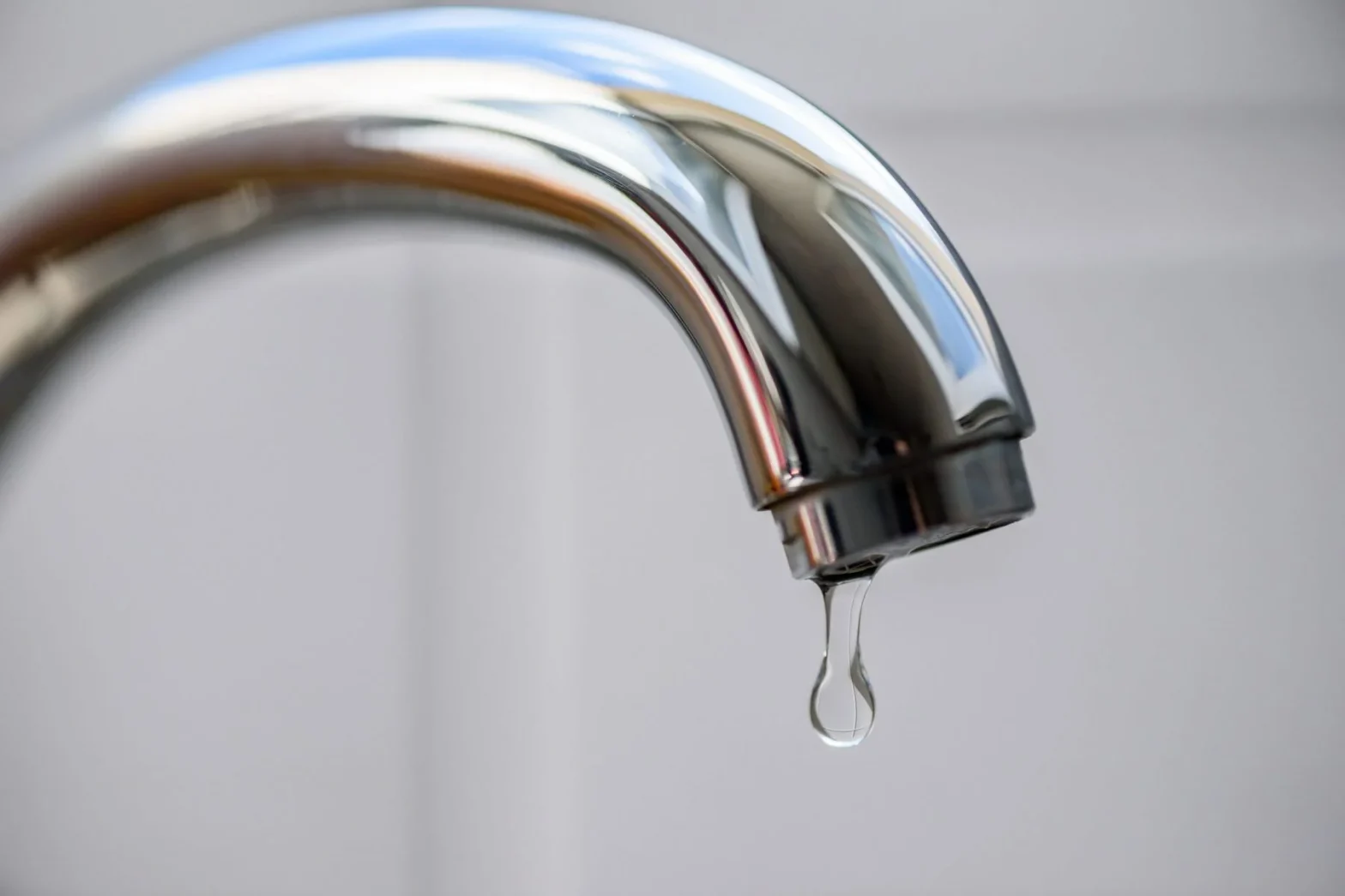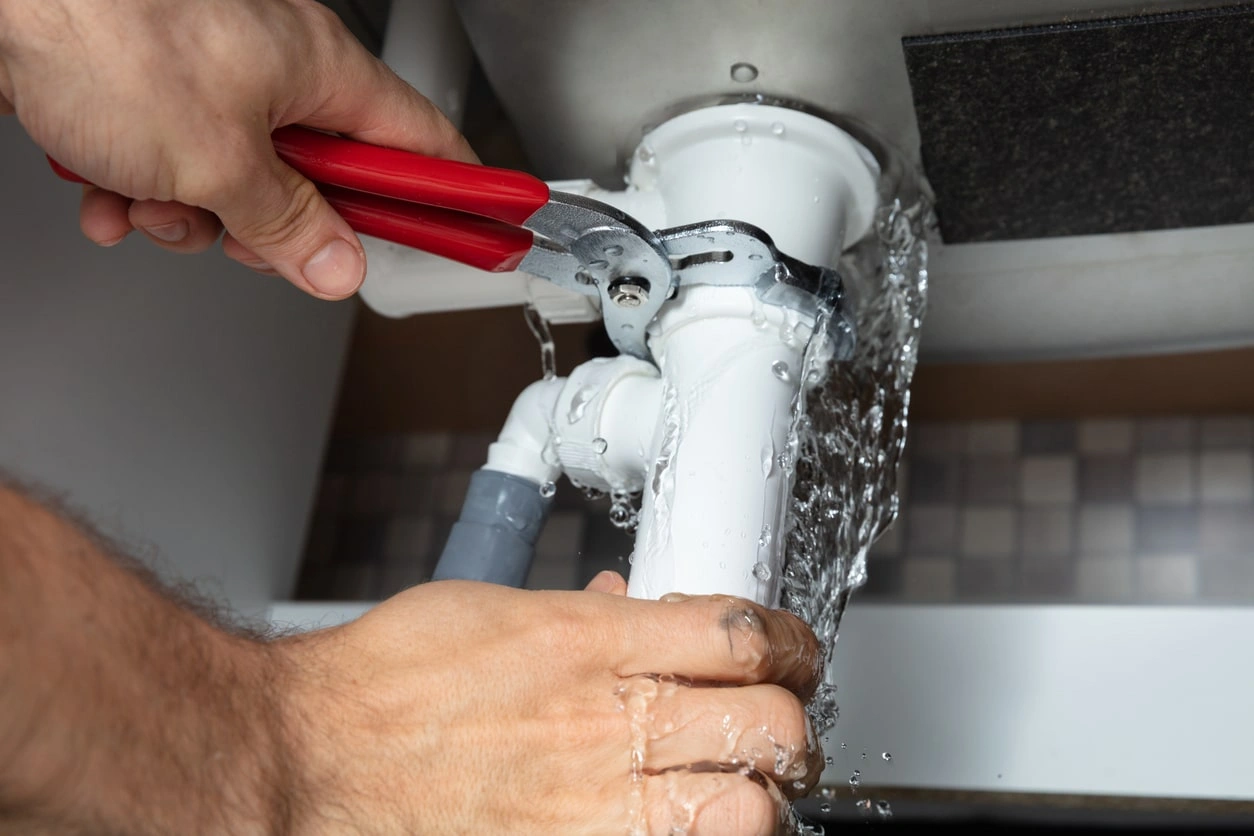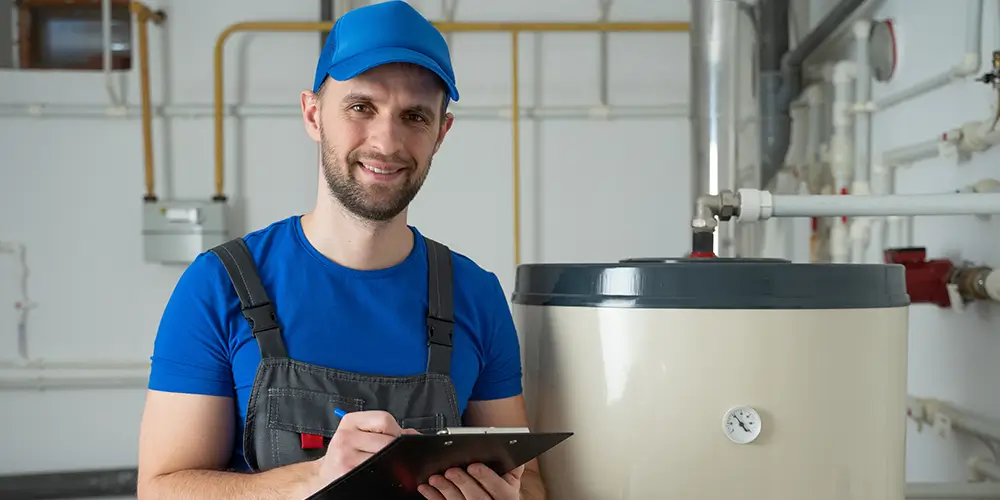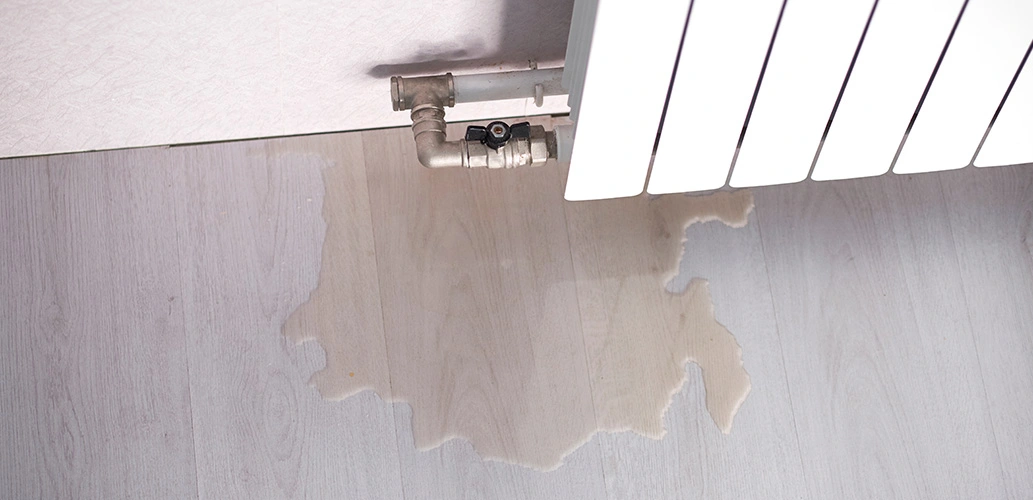What Are The Causes Of Pinhole Leakage In Copper Piping?
Renowned for its durability and consistency, copper piping has such significant history. It’s widely regarded as a trouble-free piping component for internal groundwater resources because of its strength and composite materials. Even though copper is resistant to rust, it will degrade with time, especially in Los Angeles, as it has a heavy disposition of minerals in groundwater.
Pinhole leakage is only found in copper pipework. Pinhole leaks caused by corrosion are microscopic holes that grow over time and can indicate a systemic plumbing problem. You’ll learn more about the causes of pinhole leaks and how to prevent water leaks in Los Angeles. We’ll also let you understand if and when it’s the right time to get rid of the old copper pipe.
What Is A Pinhole Leak?
Pinhole leaks are the silent killers of the plumbing system. A pinhole leak is a small leak that drips and pools over time. When a pinhole leak goes unnoticed for weeks or even months, it can inflict extensive damage without knowing what caused it. However, it’s not just copper pipes that suffer from pinhole leaks. This kind of leak can cause thousands of dollars in damage to your home and water system if a plumber doesn’t assess it properly.
Causes Of Copper Pipe Pinhole Leaks:
Copper is a common material for water pipes because of its affordability and dependability. On the other hand, copper corrodes and weakens, just like steel and iron. A variety of circumstances can cause pinhole corrosion and leaks.
Internal pitting corrosion, rusting, age, exposure, etc., are all potential causes of pinhole leaks in copper pipes. Let’s examine each of these in greater depth to determine about precise water leak detection in Los Angeles.
Corrosion Of The Internal Pit:
The main cause of pinhole leaks is internal pit corrodes. The internal part of copper pipes may have been eaten away by significant corrosion, resulting in a leak. However, corrosion in the form of small, random clusters will appear on the copper pipe’s exterior. If left unchecked, leakage could occur here.
Internal pitting’s origins are a mystery. Internal corrosion in some copper pipes is most likely accelerated by a combination of water chemistry (pH levels, salts, soft and hard water) and water turbulence (high/unstable water velocity).
Rusting:
Copper, being a metal, does not rust in a chemical sense. Only iron can achieve this. Copper, on the other hand, rusts and oxidizes. So, perceiving corrosion on your pipes is probably indicative of pitting, age, or exposure to corrosion. Copper corrosion, in contrast to rust, is slow and progressive. You may have a pinhole leak if you see “rust” and notice a decrease in water pressure.
Aging:
Copper has the advantage of being long-lasting. Copper piping can endure up to 50 years if properly maintained in a domestic plumbing system.
In older plumbing systems and residences, pinhole leaks are more typical. You may be dealing with a pinhole leak in your copper pipes that are more than 20 years old.
Exposure:
As previously stated, short-sighted installation of copper might speed up the corrosion process. Due to the different chemical structures, galvanic corrosion can occur when copper comes into contact with rebar. Concrete and dirt can facilitate corrosion.
Despite copper’s reputation as a corrosion-resistant metal, soil oxygen levels can cause corrosion of buried or underground metals. High sulfur content in concrete can degrade copper and cause it to leak, although copper does not react with concrete. You need to check water leaks with the help of experts in Los Angeles to avoid any mishap.
Turbulence:
Water must flow at 8 feet per second in the cold and 5 feet per second in the hot through copper pipes according to plumbing rules. Turbulence causes the inner protective lining to degrade over time and create pinhole leaks as water moves faster or more unstable velocity. An increase in turbulence can be due to the placement of pipe fittings too close.
Damage Caused By Chemicals:
Chemicals are the most likely cause of pinhole leaks in the copper pipe. The pH. value of your household water has little to no effect on the quality or safety of your water, but it can affect your pipes. While investigating a pinhole leak from water leak detection experts in Los Angeles, the city found four possible scenarios in which pH, temperature, bacteria, and metal could interact to create the conditions for copper pitting in the water supply itself. Your pipes’ protective oxide covering will be eaten away by a chemical reaction if any of these circumstances are present, which will result in leaks and corrosion.
A pinhole leak occurs when the protective coating on a small section of pipe wears away completely, leaving the bare pipe exposed to corrosion. However, a pinhole leak in a copper pipe can be caused by plumbing with mixed metals or acidic water.
Electrolysis:
Electrolysis can occur when you use galvanized copper plumbing in a home or You may be able to “patch” a leak, depending on the location and level of damage. Welding and soldering have a lot in common. A blowtorch is used to join the two halves together. Chemical compatibility is not a concern, as most connecting materials are composed of copper and tin. Instead of welding a pinhole completely, filler alloy is used to seal the leak.
business. To avoid this reaction, use a dielectric fitting to connect the pipes. Galvanized connections on water heaters can also cause this reaction when a ground wire comes into contact with them. Copper pipe corrosion pits lead to a pinhole leak when electrolysis is in progress.
Acidic Water:
Corrosion of copper due to acidic water causes a pinhole leak ultimately. The presence of mixed metals causes not all pitting corrosion. Water with a pH of 7 to 7.8 has a higher likelihood of causing Type 1 pitting. Coldwater is commonly connected with this. There are a few scrapes on the surface.
In type two pitting, low pH (less than 7.2) water is the main source of corrosion. It is rare to see this at temperatures less than 140 degrees Fahrenheit. This pitting is also very narrow, resulting in pipe failure. A cold-water pH over 8.0 is required for type three pitting. Pipe blockage or blue water results from this extensive and shallow pitting.
Damage To Mechanical Systems:
You may have to replace your pipes on finding physical impurities such as silt or heavy metals in your water supply. The hardness of your water can cause such damage. Copper piping’s oxide layer can be eroded over time with too high water pressure.
Poor Application Of A Protective Layer Or Localized Damage:
It is uncommon, but not impossible, for any copper pipes to have been of low quality or fitted wrongly. It is more likely to happen whether your pipes are installed or modified incorrectly. To avoid pinhole leaks and other issues, you need to inspect copper pipes that have been damaged.
Metal Structure has Irregularities:
Copper pipes are constructed using a combination of copper and another metal. The water leak detector installed on interconnecting joints in your house in Los Angeles is more susceptible to this problem. The pressure between two metals, especially in a solvent like water, can cause them to degrade mutually. The oxide layer within your copper pipes will wear away due to this stress, eventually leading to pinhole leaks.
Effective Ways To Prevent Pinhole Leaks:
You can prevent pinhole water leaks in copper pipes with minimal time and effort. Follow these procedures to ensure that none of them annoy you:
Chemical-Induced Damage:
Copper pipes corrode due to chemical reactions when the water has a high pH value. Using a water softener can help protect your copper pipes from damaging pH values. Water softeners should be checked and adjusted often if they already exist in your home.
Dynamical Equipment Damage:
Many of the impurities that can corrode your copper pipes can be removed with a water softener as well. However, your water pressure will not be affected by water softeners. Other actions may be necessary if your water pressure is abnormally high.
Make sure your water main pressure meter is working properly. If the price seems excessively high, you could inquire about it with your local water provider. Get a water pressure restrictor if they can’t figure out what’s causing your pipes to burst.
Minimal Insulation Or Localized Destruction:
Our recommendation is to replace your pipes as soon as possible. Suppose they appear to have been incorrectly fitted or broken during the water leak detection process done by experts in Los Angeles. It is possible to save money by having your pipes inspected by a professional plumber rather than solving the problem yourself.
Uneven Metal Structure:
In some chances, you may be able to replace old joints, fittings, or sections of pipe. We suggest getting a professional plumbing examination to locate the faulty pipe material and figure out what to do about it.
Using Solder From Outside The Circuit Board:
Replace The Affected Area Of Copper Piping:
Alternatively, you can merely replace the pipe with a new one. A portion of the wall, ceiling, or floor will get eliminated to install a new copper pipe. Afterward, the new pipe is placed by soldering the pipes together, similar to the “patch-up” approach.
Use PVC Pipe Or Another Material In Its Place:
Alternatively, you might use a PVC pipe or a similar material, such as a CPVC pipe, to replace the damaged pipes. It’s essentially a plastic pipe when it comes to PVC. Their longevity, low production costs, and inexpensive installation costs make them a popular choice in plumbing. Although it is made of PVC, it is chemically different and better suited to hot water applications.
Plastic is an excellent material because it never corrodes or pits, preventing pinhole leaks from every time. On the other hand, because of the limitations of plastic, PVC and similar pipes cannot be utilized universally. However, not all construction standards accept plastic pipes.
Re-Pipe The Entire System:
Re-piping your home is an option. Suppose your copper pipes are more than 20 years old. With the best water leak detectors in Los Angeles, replacing aging pipes can be difficult. But they’re more likely to leak if left unattended. They will require more regular repairs if they are susceptible to leaks. A re-piping job can extend the life of your home’s plumbing by 20 to 50 years, making it a more cost-effective option than a few leak-free months. However, this is probably the most expensive alternative.
Putty Made of Epoxy:
Epoxy putty is an excellent material for swiftly patching a leak. Epoxy putty is a filler that is both sticky and waterproof. Drain the leaking pipe first by turning off your water supply. It is time to apply the putty when the pipe has dried. Cure it for a few days. Once it’s applied correctly, it should stop any more leaks.
In time, it will wear out, and the leaking will most likely occur again. However, an epoxy-based coating can be used as a long-term remedy for your plumbing system as a whole, not only for a leak.
Conclusion:
Copper pipes manufactured today are supposed to last at least 20 years. Pinhole leaking, a particularly insidious plumbing issue, prevents this from happening all the time. Only copper pipes are susceptible to pinhole leaks. Within two years of installation, pinhole leaks can form in copper pipes.
In the United States, pinhole leaks in the copper pipe are typical. When the natural defenses against corrosion on the interior of your copper pipes are worn away by fluctuations in your water’s pH (acidity), you’ll have a pinhole leak. The best way to avoid a pinhole leak is to utilize copper pipes, which should be the case if you use them. The above given are the causes of pinhole leakage in copper piping, which you can overcome with the help of the best water leak detector in Los Angeles.


